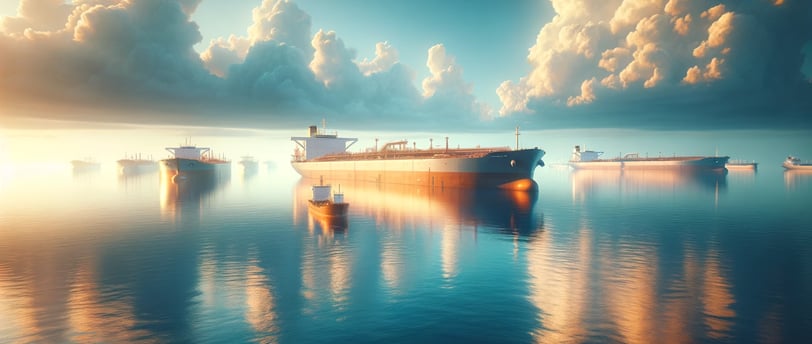Types of Tankers that Transport Oil
In this post, we will be looking at the the types of tankers that are used to transport crude oil. Tankers names, sizes and descriptions are included,


Crude oil is transported globally through a vast network of pipelines, tankers, and other means to meet the world's energy demands. According to the EIA, the United States is estimated to have exported 9.5 million barrels per day of petroleum products and imported 8.33 million barrels per day in 2022. This significant volume of crude oil is pumped through extensive pipeline systems and transported in specialized crude oil tankers (ranging from smaller Aframax tankers to massive Very Large Crude Carriers).
Below is a list of the different types of oil tankers used to transport crude globally, sourced from Trafigura's Commodities Demystified: A guide to trading and the global supply chain.
Product Tanker: Product tankers are designed to transport refined petroleum products, such as gasoline, diesel fuel, and jet fuel. They have segregated compartments and advanced pumping systems to handle multiple types of products in a single voyage, ensuring product purity. They have the smallest capacity, ranging from 10,000 - 60,000 deadweight tonne (DWT).
Very Large Crude Carrier (VLCC): VLCCs are among the largest crude oil tankers in the world, capable of carrying up to 320,000 DWT. They are often used for long-distance oil transportation, especially between major oil-producing regions and refineries.
Ultra Large Crude Carrier (ULCC): ULCCs are even larger than VLCCs and are among the largest vessels in the world with a capacity up to 550,000 DWT. They are used for long-distance transport of crude oil, especially between major oil-producing regions and refineries.
Suezmax Tanker: Suezmax tankers are designed to fit through the Suez Canal's maximum dimensions. They have a smaller capacity than VLCCs, ranging from 120,000 to 200,000 DW, but are still suitable for transporting significant quantities of crude oil on international routes.
Aframax Tanker: Aframax tankers are smaller than Suezmax and VLCC tankers, with a capacity typically ranging from 80,000 to 120,000 DWT. They are versatile and often used for regional and coastal crude oil transportation.
Panamax Tanker: Panamax tankers are designed to fit through the Panama Canal's maximum dimensions. They are typically smaller, with capacities ranging from 60,000 to 80,000 DWT. Panamax tankers are suitable for transporting both crude oil and petroleum products.
The global crude oil transportation infrastructure is essential for maintaining a stable and reliable energy supply for various industries and consumers worldwide.
In the next post, we will be see some of the documents required to transport oil on these types of tankers.